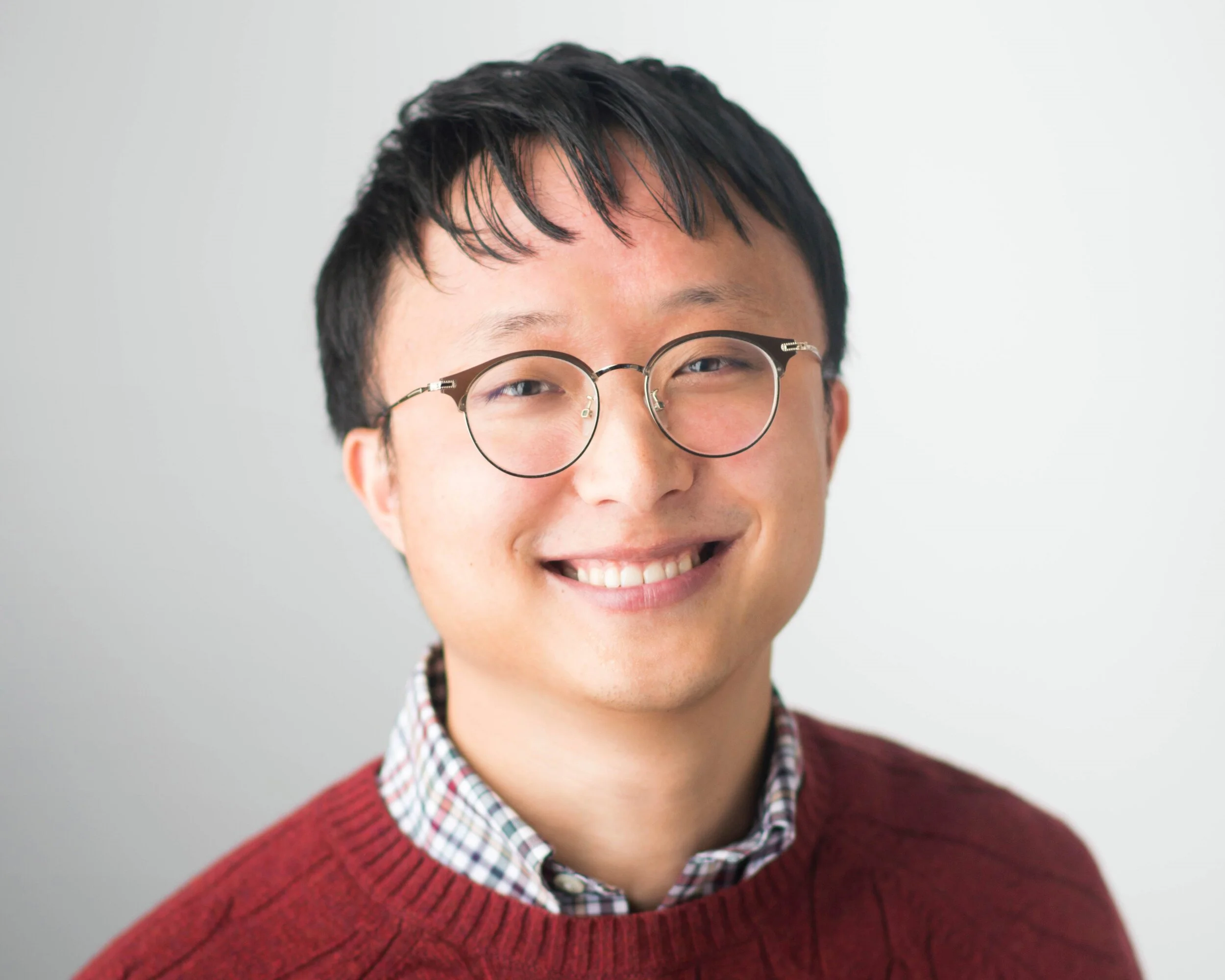Subong Kim, Ph.D.
Meet the Researcher
Kim received his doctorate at the University of Iowa, where he studied the neural correlates of variability in speech-in-noise perception using high-density electroencephalography (EEG) under the guidance of Inyong Choi, Ph.D. Kim is currently a postdoctoral research fellow at Purdue University in the laboratory of Hari Bharadwaj, Ph.D. Both Choi and Bharadwaj are ERG alumni. Kim is a 2022 Emerging Research Grants recipient, and was renewed for a second year in 2023.
Listening to speech in noisy environments can be significantly challenging for people with hearing loss, even with help from hearing aids. Current digital hearing aids are commonly equipped with noise-reduction algorithms; however, noise-reduction processing introduces inevitable distortions of speech cues while attenuating noise. This study seeks to understand the biological mechanisms behind how people with hearing loss and similar audiograms react very differently to background noise and noise-reduction processing in hearing aids in order to improve customizable hearing interventions.
Professors Bharadwaj and Choi have been a constant source of inspiration for me in so many ways throughout my career. This project extends my initial findings from cortical EEG and moves toward examining physiological measures to understand the auditory and cognitive profiles of listeners who have hearing loss.
I never imagined I would end up as a scientist. I was a law student exploring career options, and I grabbed the chance to take a different path. I came across the field of audiology and found it intriguing immediately. I still rely on basic tenets of legal writing, which benefits my science career to a great extent. When I was young, I had always dreamed of being a performer. Speaking at conferences and lecturing for classes is one of the biggest reasons I love being in academia.
As a child I had frequent ear infections, continuing into elementary school. I was often at the ear, nose, and throat clinic after school, so it became very familiar. When I went to the clinic as an audiology student, I found it a very comfortable environment. All those ear anatomy pictures hanging on the wall made me feel quite at home.
My wonderful father taught himself the differences between EEG (what I study) and fMRI (another neuroimaging technique) just so he could talk to me about my research. My family have been my biggest fans since day one of this journey. In the near future, I would love to establish my own lab and continue my work in an impactful program. Over the next decade, I hope my research team will be able to improve our understanding of sensorineural hearing loss and find creative ways to improve the lives of those affected.
To relax I like to go to a quiet art museum alone, spending time looking at works of art. Museums are a good place to slow things down and clear my thoughts. When I see the incredible effort put into a painting, it rekindles my passion for life and work.
Subong Kim, Ph.D., is funded by donors to Hearing Health Foundation who designated their gifts for the most promising research. HHF sincerely thanks our community for supporting these projects that address the full range of hearing and balance science.
Click here to download a PDF of Dr. Kim’s Meet the Researcher profile.
The Research
Purdue University
Influence of individual pathophysiology and cognitive profiles on noise tolerance and noise reduction outcomes
Listening to speech in noisy environments can be significantly challenging for people with hearing loss, even with help from hearing aids. Current digital hearing aids are commonly equipped with noise-reduction algorithms; however, noise-reduction processing introduces inevitable distortions of speech cues while attenuating noise. It is known that hearing-impaired listeners with similar audiograms react very differently to background noise and noise-reduction processing in hearing aids, but the biological mechanisms contributing to that variability is particularly understudied.
This project is focused on combining an array of physiological and psychophysical measures to obtain comprehensive hearing and cognitive profiles for listeners. We hope this approach will allow us to explain individual noise tolerance and sensitivity to speech-cue distortions induced by noise-reduction processing in hearing aids. With these distinct biological profiles, we will have a deeper understanding of individual differences in listeners and how those profiles affect communication outcomes across patients who are clinically classified with the same hearing status. This study’s results will assist in the development of objective diagnostics for hearing interventions tailored to individual needs.
Long-term goal: To advance our understanding of the biological mechanisms of the impaired auditory and cognitive systems with the intent of improving customizable hearing interventions based on listeners’ individual differences.


